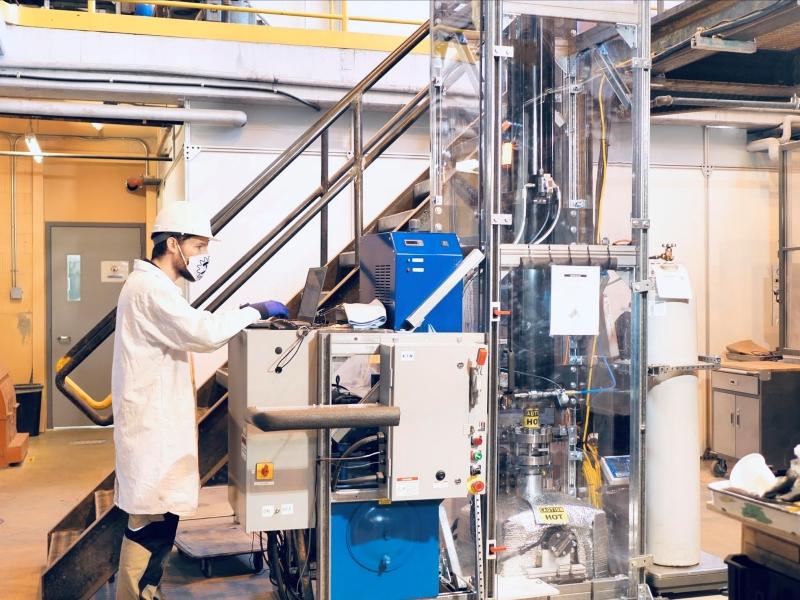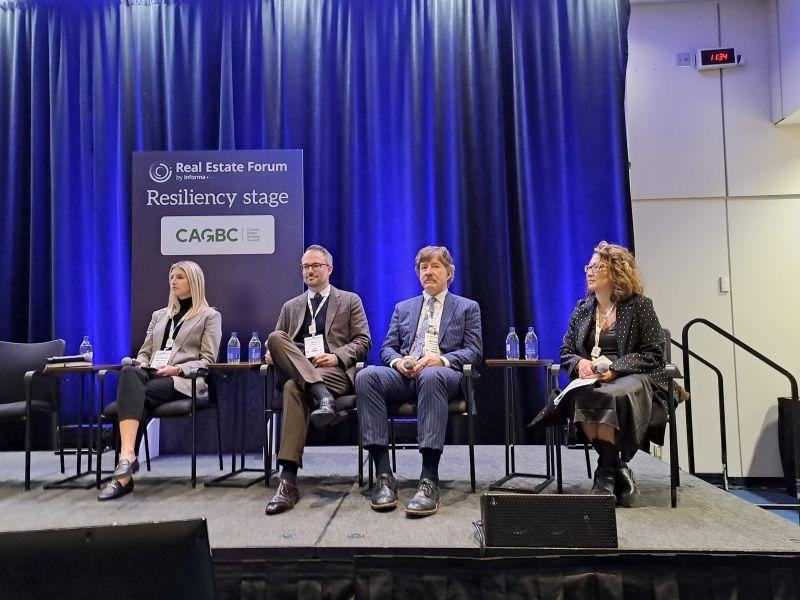
The Place Ville Marie office building, part of Ivanhoé Cambridge’s Montreal portfolio. (Courtesy Ivanhoé Cambridge)
Ivanhoé Cambridge Inc. plans to reduce the carbon intensity of its Montreal properties by 55 per cent by 2030, when compared to the company’s 2017 baseline.
The reduction would be equivalent to about 8,000 tonnes of CO2 annually, the company says. The baseline carbon intensity of its Montreal properties was 1.5 kgs. of equivalent CO2 per square foot. The latest update from 2020 stands at 1.4 kgs. per square foot.
“The baseline intensity for our Montreal portfolio is actually already lower than our global average,” Patrick Culhane, Cambridge’s manager of energy and sustainability, told SustainableBiz. “To reduce that intensity by 55 per cent by 2030 is still a very ambitious target.”
Ivanhoé Cambridge operates 30 Montreal properties including the office, retail and hospitality sectors.
A release states the planned reductions will be based on a “strategy focusing on energy savings, more efficient systems and buildings, proven technologies and a shift to electrification.”
Last April, the company announced decarbonization targets for its global portfolio. They include: reducing the carbon intensity of the global portfolio by 35 per cent by 2025 versus 2017; increasing low-carbon investments by $6 billion by 2025 versus 2020; and aiming for all the company’s new developments to be net-zero carbon from 2025.
Culhane also mentioned Ivanhoé Cambridge has begun work on specific plans for each Montreal property detailing how it will reach the 2030 target.
Progress from 2017
He cited Place Ville Marie as an example of the measures the company is taking to reduce emissions, calling it the complex that is “furthest along.” The office building is connected to the district steam network and last year began a project installing a series of heat pumps to reduce steam consumption.
A series of retro-commissioning and energy audits are planned for what Culhane calls the “first round of buildings” this year, which will vary depending on the asset.
“While the systems may differ from building the building, I think it’s going to be the same sort of pathway of retro-commissioning to really tighten up the existing buildings and (their) systems,” Culhane said. “Then deeper energy audits that will help us sort of set a path essentially to replacing equipment and replacing systems . . . Whether it’s direct heat recovery, heat pumps (or) it’s electric boilers.”
As the real estate subsidiary of the Caisse de dépôt et placement du Québec, Cambridge holds interests in over 1,200 buildings primarily in the industrial and logistics, office, residential and retail sectors. As of the end of 2021, it held $69 billion in real estate assets.
An environmental roadmap, published in 2020, states the firm will begin annual reporting on carbon target progress this year. In 2023, Cambridge will then introduce “a strategy on construction-related carbon emissions.”
In 2020, the company’s hotels sector comprised the highest CO2 emissions, at 5.1 kgs. per square foot. Its logistics sector was the lowest, at 3.5 kgs. of CO2 per square foot.
The roadmap also refers to specific strategies for carbon reduction. Among these are reduced fossil fuel dependency, on-site renewables, off-site renewables and grid decarbonization. Carbon offsets are mentioned as a “last resort.”
In 2017, Ivanhoé Cambridge’s total carbon intensity equalled 5.3 tonnes of CO2 equivalent per 1,000 square feet.
The latest edition of the company’s activity report is from the year 2020, which published in April 2021. It reports a 19 per cent reduction in carbon intensity from 2017 for Scope 1 and 2. That translates to 4.3 equivalent tonnes of CO2 per 1,000 square feet.
Long-term goals
Ivanhoé Cambridge will continue working with the Montreal Climate Partnership (MCP), an independent initiative comprised of economic, community, philanthropic and institutional organizations established in December 2020. The MCP aims to help Montreal achieve its GHG emissions reductions goal of 55 per cent by 2030 and carbon neutrality by 2050.
The latest Intergovernmental Panel on Climate Change report states in relation to the other economic sectors, real estate will have to contribute one-quarter of the emission reductions needed to achieve carbon neutrality by 2050.
“We’re not waiting for a magic bullet to hit the target. There’s obviously some new technologies that will come to the fore in the coming years,” Culhane said. “But for the time being, we believe that we can we can achieve that target with the existing technologies in place.”










